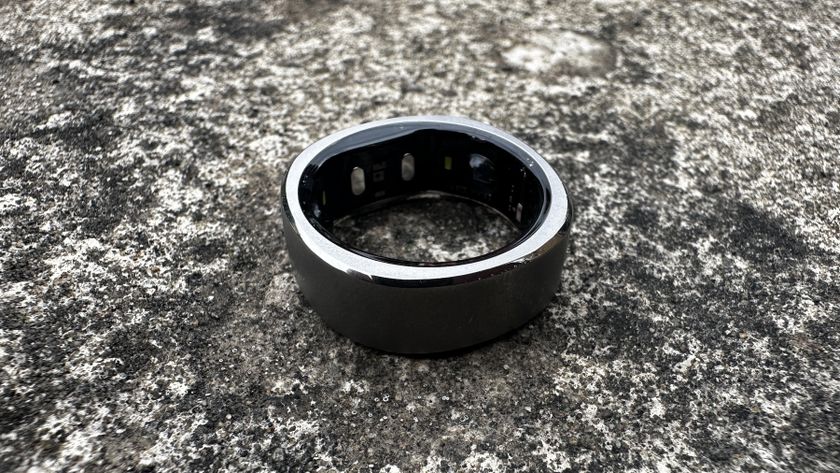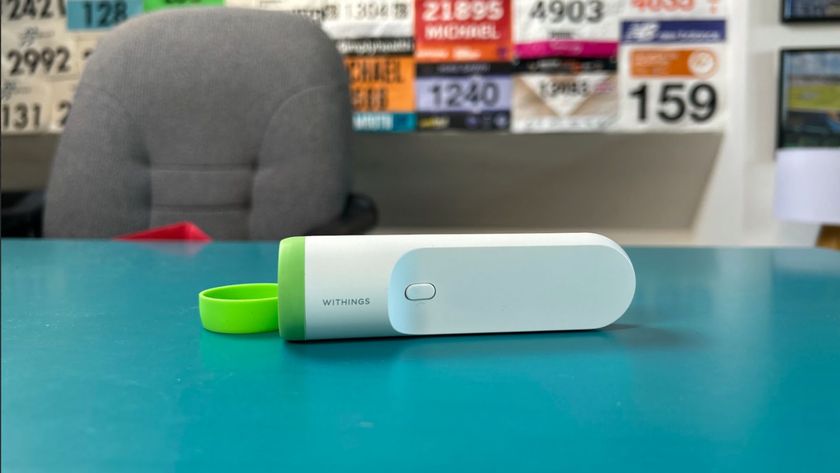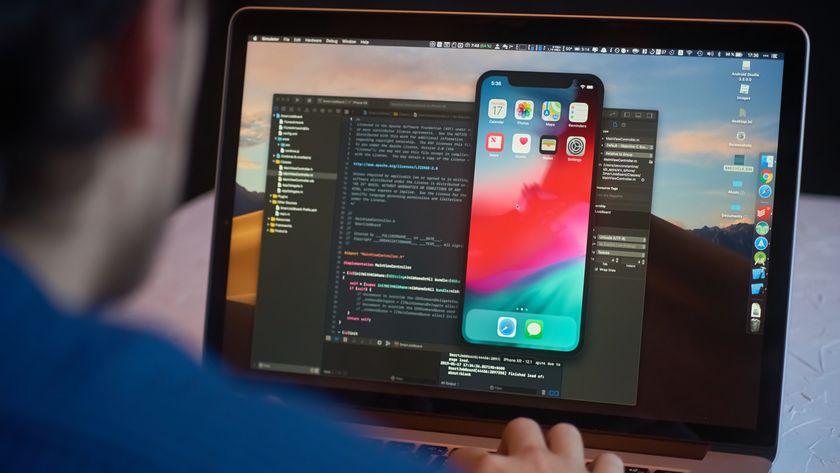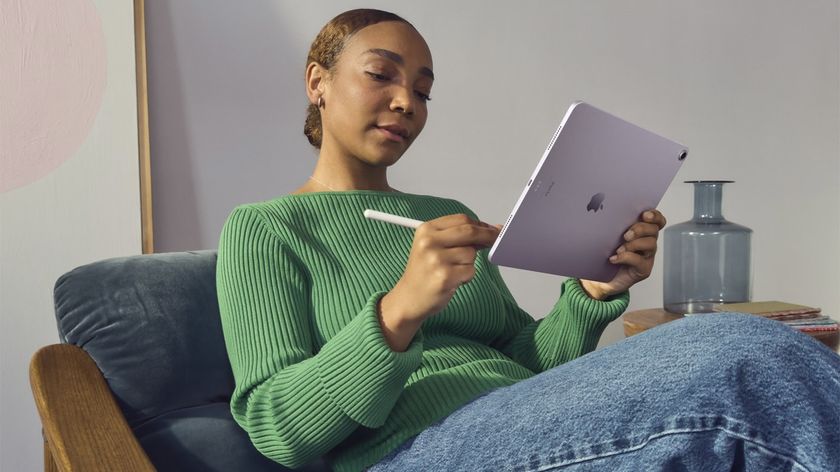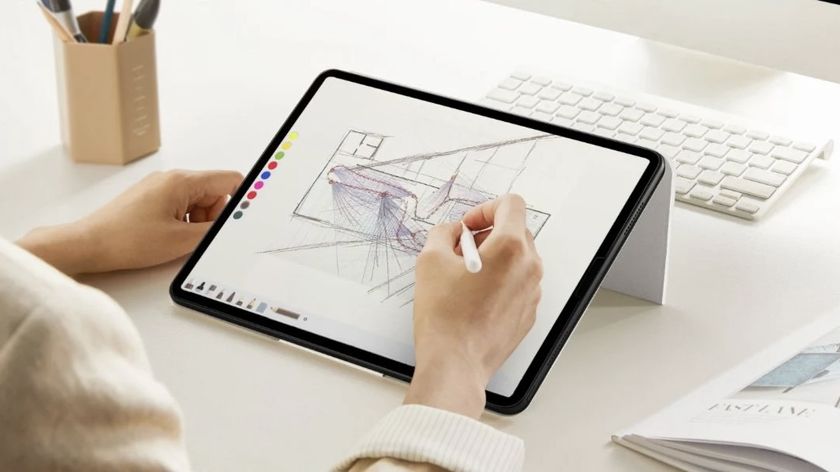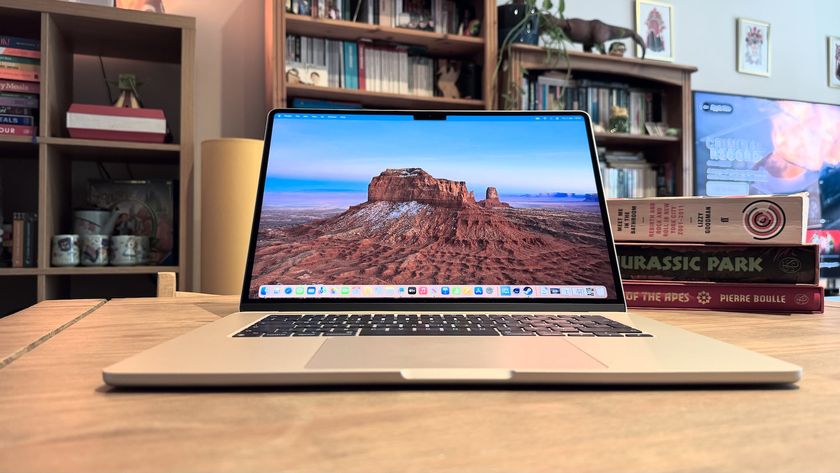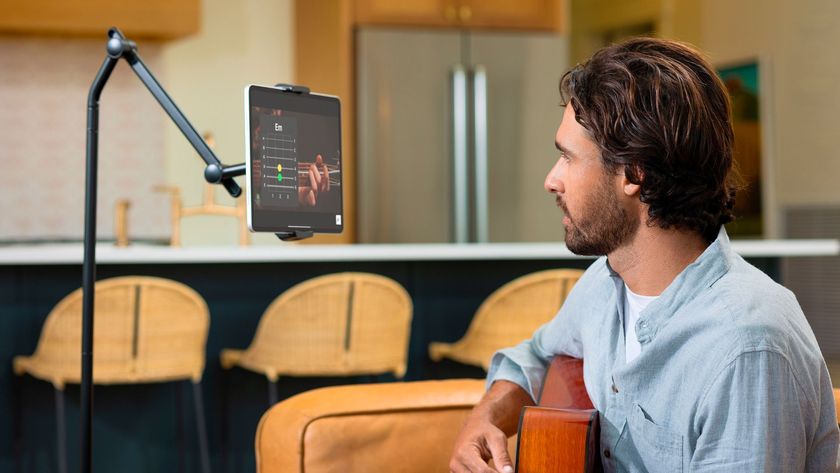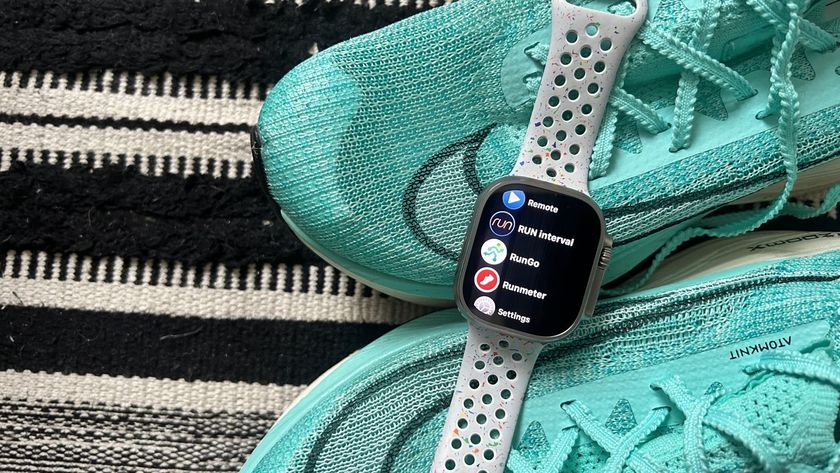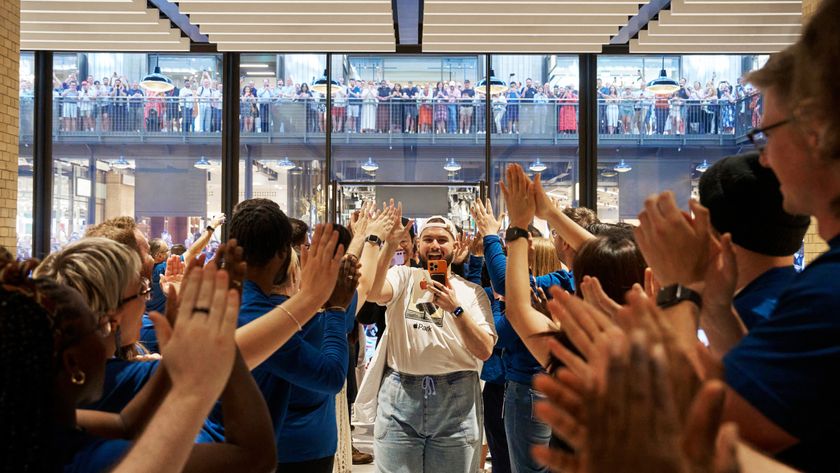The best TVs for Apple TV: Get the most out of your Apple streamer
Ted Lasso in top quality.
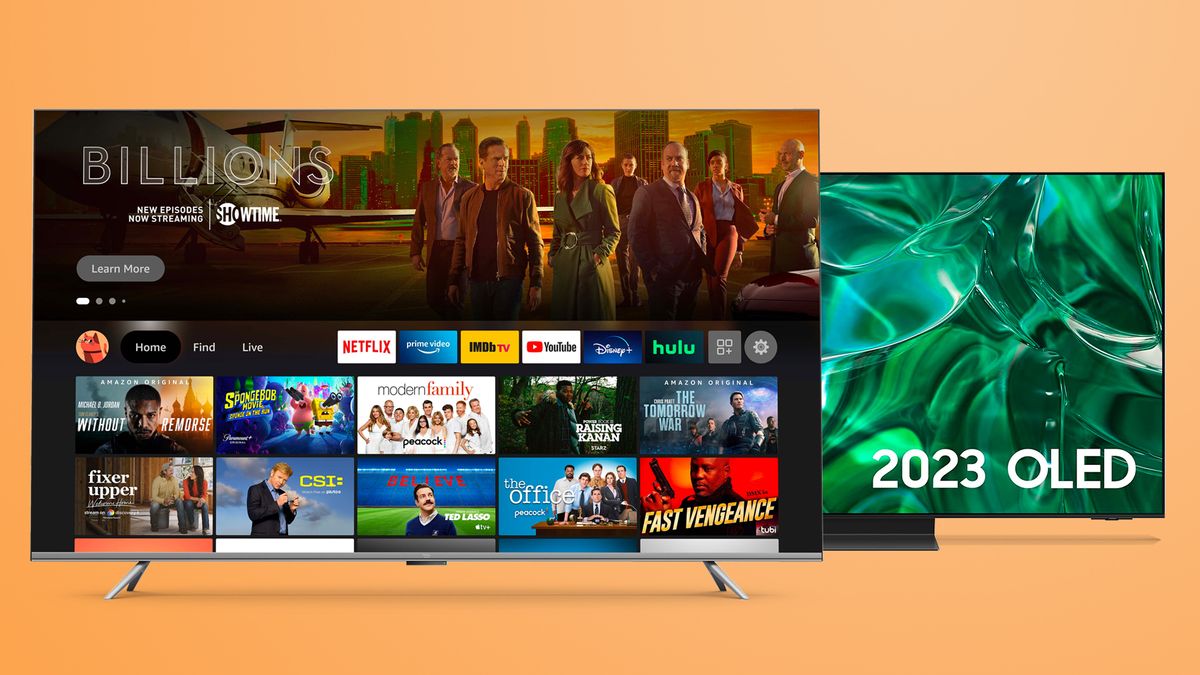
Apple TV+ has some incredible movies and TV shows to watch, with some spectacular visual moments to enjoy. To really see them at their best, however, you'll want a really nice TV — one, generally, with a 4K panel, and support for either Dolby Vision or HDR+. That way, you'll get the best visual clarity for all those great-looking TV shows, or even movie nights in the dark.
There are a couple of other things to consider as well when choosing a TV to get the most out of Apple TV+. You need, of course, to think about how much your TV should cost, and how much you can afford. You might have to forgo some of the more premium features if you want to save some money, but you'll still be able to get some excellent examples of solid TVs. There's also the size of the TV — you might want to go as big as possible, but you also need to make sure that it's going to fit where it's going to end up, and remember that the bigger TV, the more it will cost.
Our selection of TVs has been picked and sorted to make sure that you can find the best TV for Apple TV+ for you, so that you can make an informed decision. Here are the best TVs out there.
The quick list
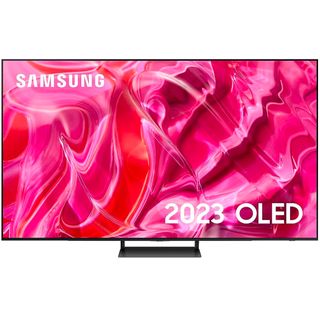
The best TV for most people
The Samsung S90C is brighter than other OLED TVs at the same price, has refined picture quality, really good built-in sound, and excellent gaming features too.
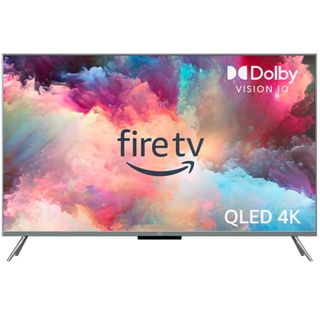
The best budget TV for Apple TV
Fire TVs have easy-to-use software, and the Omni range delivers good contrast and reasonable brightness with Dolby Vision HDR for a low price – the range is great value.
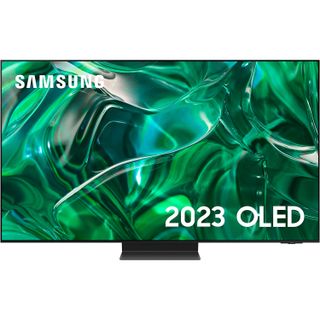
Best premium TV for bright OLED pics
The Samsung S95C is as bright as OLED TVs get today, bringing the most astounding contrast and color of any set, in a super-sleek design with great features.
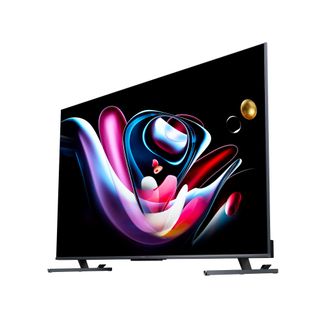
The best mid-range TV for Apple TV
This is a mini-LED TV, meaning it's incredibly bright, but with great contrast control still. And this model is astoundingly cheap for such advanced tech.
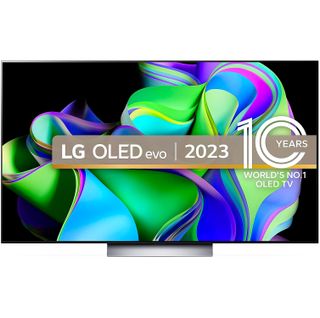
The best TV to use with Apple TV 4K
The LG C3 is a superb TV, and the only model here that supports QMS, so the Apple TV 4K box can seamlessly switch HDR modes or to 24fps for movies.
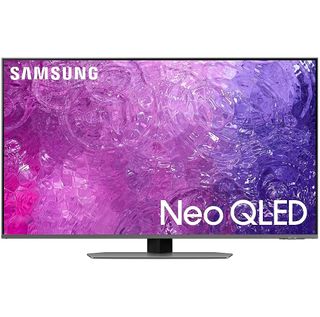
The best TV for bright rooms
In bright rooms, you need high brightness levels to beat reflections. This is the brightest here, with a high-end mini-LED panel, and excellent processing.
Load the next 2 products...
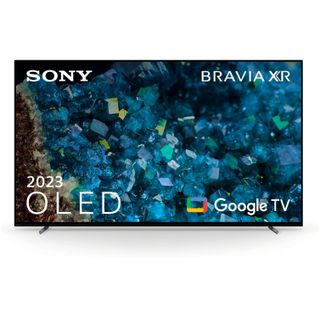
The best TV for sound
If you want high-quality sound without adding a soundbar, and without elite price, this offers it – and its picture quality is wonderful, though it's not very bright.
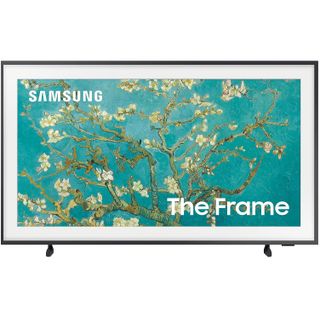
The best TV for aesthetics
Samsung's The Frame range looks like picture frames, with swappable frame colors, plus an art mode. And a good-quality QLED screen, of course.
The best TV for Apple TV: in depth
You can always trust iMore.
The best TV for Apple TV for most people
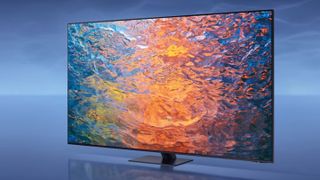
1. Samsung S90C
Specifications
Reasons to buy
Reasons to avoid
We think the Samsung S90C is the place most people should start with their TV journey for a few reasons. It's an OLED TV, which means you get incredible contrast, with each pixel generating its own light, which means better nuance and detail in dark areas, and no leaking from light areas to dark. But it's not just any OLED - it's a next-gen QD-OLED, which means it's brighter than the likes of the LG C3 (also in this list), and has better color reproduction, for essentially the same price.
Combined with Samsung's seriously impressive new image processing – which does a great job with making things look natural on the 4K screen, even if they're upscaled from HD or SD – the image quality is simply the best you can get at this price.
As an added bonus, there's a built-in sound system that sounds better than most of the competition too – though the Sony TVs here beat it. But still, you may not need to add a soundbar, unlike some TVs here.
Samsung's Tizen TV platform provides streaming support, including Apple TV+. It's not the easiest to use everything here, but it's not exactly hard either. And for gamers, there's full next-gen feature support, including 4K 120Hz and variable refresh rate from the PS5 and Xbox Series X, on all four HDMI ports.
The one notable downside of this TV is that it doesn't have Dolby Vision support – but it's bright enough and controls its HDR well enough that we don't think it holds it back. It supports HDR10+, which some Apple TV+ shows use. The exception to all of this praise is the 83-inch version, which uses a different, less-bright panel – we don't recommend that one so strongly. The 83-inch LG C3 is a better bet.
The best budget TV for Apple TV
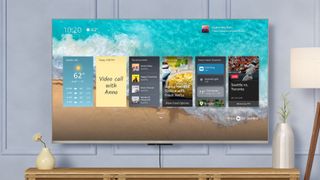
2. Amazon Fire TV Omni
Specifications
Reasons to buy
Reasons to avoid
Amazon's Fire TV Omni series is meant to steal QLED fire from the gods and bring it to the people. For a very reasonable price (especially if you buy in one of Amazon's frequent sale events), you get a screen with the coveted quantum dot colors, plus a full array backlight for strong, even brightness. At a size of 50 inches and larger, that backlight has local dimming too, for better contrast.
In our experience, this TV is a pretty great hit for the price, but obviously with some corners cut, on account of being the most affordable set here. Support for both Dolby Vision and HDR10+ advanced HDR formats means whatever you watch from Apple TV+ will look as good as it can – however, it struggles with nuance in dark areas, even with all this HDR support. Color accuracy out of the box is very impressive, but the overall range of colors it can show isn't as strong as other TVs here. The full array backlight with local dimming can show deep black tones that impress, but can't go as bright as any other TV here for HDR peaks.
None of this is a surprise for the price – the Fire TV Omni performs really well, but that's what you're losing out on compared to the likes of the Hisense U8K.
But one of its strengths is the Amazon Fire TV software, which is good at making it easy to find what you want from the apps you want, including voice control. Apple TV+ is here, naturally, along with all the other big players.
The best premium TV for Apple TV
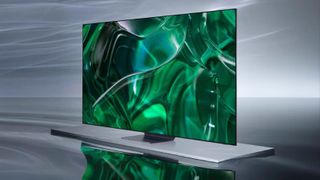
3. Samsung S95C
Specifications
Reasons to buy
Reasons to avoid
The Samsung S95C is the big sibling of the Samsung S90C at the top of our list. It has three notable improvements over that TV, and one notable disadvantage that keeps it from taking the top spot itself.
The first advantage we've referenced a lot already is its brightness. Hitting around 1,400 nits of brightness compared to a little over 1,000 for the S90C, it's another major step up in contrast, delivering cleaner and bolder highlights and white tones, and creating even more separation between light and dark. But its overall brightness outside of small highlights is a step up too, meaning more lifelike scenes in general, especially with the wide color of QD-OLED.
Secondly, it uses Samsung's One Connect box, which is an external unit that houses all of the connections and power, with a single tiny cable running to its super-slim panel. This is obviously great for aesthetics as well as general tidiness.
Finally, it has more speakers around the frame than the S90C, so its audio quality is even better, though a screen this good really ought to be paired with some proper speakers.
The downside is the price. It's one of the most expensive models on the market today, and we think the S90C is more than satisfactory for most people at its price. But if you want to hit the highest heights an OLED TV has to offer, this is it. Like other Samsung TVs here, Apple TV Plus is part of the Tizen platform.
The best mid-range TV for Apple TV
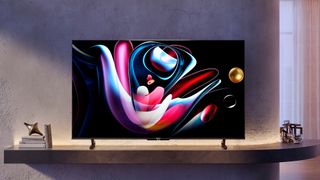
4. Hisense U8K
Specifications
Reasons to buy
Reasons to avoid
The Hisense U8K is an astoundingly affordable TV when you factor in just how many advanced features it offers. Mini-LED technology means it delivers better brightness than any OLED TV in this list, yet it's half the price of them at the same sizes. Mini-LED uses a dense layer of extra-small LEDs behind the pixels to provide their light, which means there can be more of them (great for brightness and uniformity), but they can also be dimmer in more precise areas for parts of the screen that need to go dark. This alone would make the TV punch well above its price class.
But it's got both kinds of advanced HDR, so it can really make the most of all Apple TV+'s HDR content, and even has a full suite of next-gen gaming features for anyone with a PS5 or Xbox Series X. That's 4K 120Hz, variable refresh rates, and even Dolby Vision gaming, which the Samsung at the top of our list can't offer. These only work on two of its four HDMI ports, though.
Compared to a more expensive mini-LED TV (the Samsung QN90C, further down this list), you lose some refinement in the picture – there's still noticeable leak from bright areas to dark areas, for example, though it's still in a different world compared to the Amazon Fire TV Omni – but nothing else at the same price delivers the same richness of colors and contrast right now.
The smart TV platform is Google TV in the US, and Hisense's own Vidaa in the UK. Google TV is easy to use, and does a good job of bringing together everything you want to watch in one place. Vidaa is… fine. It's not bad, it's not good.
The best TV to use with Apple TV 4K
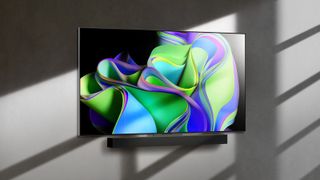
5. LG C3
Specifications
Reasons to buy
Reasons to avoid
The LG C3 is a fantastic-looking TV that's mostly overshadowed by the S90C, which offers better contrast and sound for essentially the same price. However, the LG C3 has a particular advantage if you're planning to use the Apple TV 4K as your main streaming box, instead of the built-in smart TV software, which is why it has to be on the radar of the Apple faithful.
It's called QMS (quick media switching), and it's supported by pretty much only the LG C3 (and its brighter, but much more expensive, sibling the LG G3), as well as the Apple TV 4K box. Basically, it enables the Apple TV 4K to tell the TV that it wants to switch between different HDR types or – more importantly – between 24fps and 30fps totally seamlessly.
This is important because it means that if you're watching a 24fps movie from the Apple TV 4K, the TV can seamlessly switch itself to show 24 frames per second on-screen – most TVs have to work out a way to show 24fps movies within their 60fps refresh rate, and if you've done the maths on that, it doesn't work out neatly. That's a big part of why TVs use the dreaded 'motion smoothing' that you've heard so much about. If you have an LG C3 and Apple TV 4K with QMS active, you shouldn't need any motion smoothing – everything should look natural.
It's also just a great TV! If you don't need brightness, it's refined, detailed, natural, and packed with features, including next-gen gaming tech on all four HDMI ports. The sound is okay too, though not a patch on the Samsung or Sony TVs here.
The best TV for bright rooms
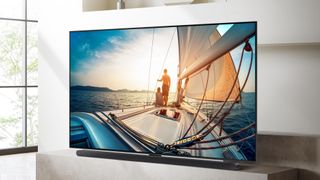
6. Samsung QN90C
Specifications
Reasons to buy
Reasons to avoid
While the Hisense U8K is extremely bright, the Samsung QN90C is another step beyond that, hitting 10%-25% more brightness, and has an even more advanced mini-LED backlight for more precise contrast. There's less spread of light from bright areas to dark, and yet that brightness is capable of hitting even higher highs at the same time.
Though it isn't really the peaks of brightness that make us recommend this (but it helps). It's the general brightness of the screen, even in average scenes – it's around three times as bright for this compared to OLED TVs, which just makes it so much more visible in a bright room where sunlight streams in.
Reflections are the bane of seeing things clearly in a bright room, and if your TV is bright, it can blast past those reflections. And the QN90C is nearly as bright as TVs get, and it has an anti-glare display to help with that further.
Samsung's new-gen processing is also excellent, and there's a great built-in sound system. The lack of Dolby Vision is a shame, but when a TV is this bright, it honestly doesn't matter this much.
Apple TV+ is supported by the Tizen smart TV system of the QN90C, and as we've already mentioned it's not the most user-friendly of our list here, but it's fine overall — few people will struggle with it, it's just ugly and awkward in moments.
The best TV for sound
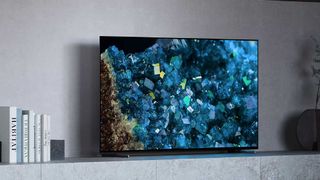
7. Sony A80L
Specifications
Reasons to buy
Reasons to avoid
This is basically the more affordable variant of the Sony XR-A95L further up this list – the same elite processing and a far better built-in sound system than almost any other TV, but it uses a regular OLED panel instead of a new-gen QD-OLED panel. What does this mean in practice? It's nowhere near as bright – in fact, we've measured its peak brightness at around 800 nits, compared to around 1,400 for the QD-OLED screen used in the Sony XR-A95L. That's a big difference.
And yet, given the reduction in price, maybe it doesn't matter. The refinement of the picture quality is second to none here – it may not have as big contrast as some TVs here, but if you're watching in a controlled-lighting environment, it really makes the most of anything you throw at it. HD content is upscaled to 4K extremely cleanly and naturally, and 4K HDR is shown super-sharply, with vibrant and real colors, as well as lots of detail in shadows, as you'd hope for from OLED.
The sound system combines actuators in the screen itself with a bass speaker on the back, meaning that sound is positioned expertly for whatever's happening on-screen, while also being hefty and clear. It's one of the few TVs that won't make you rapidly want to add a soundbar to it, so it's good value in that sense, which is a big part of why it's on this list – it's the choice of picture connoisseurs on a reasonable budget, who don't want multiple boxes.
Many of its flaws are minor – there's no HDR10+ support, and gamers may be unhappy that only two of its ports work to support 4K 120Hz (compared to all four on the LG C3 or Samsung S90C). It uses Google TV for its smart TV software, which is easy to use, though naturally comes with Google data collection and ads.
The best TV for aesthetics
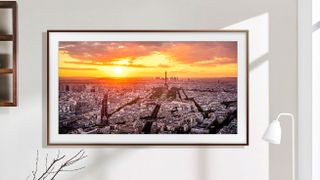
8. Samsung The Frame (2023)
Specifications
Reasons to buy
Reasons to avoid
If you're reading about TVs on an Apple site, there's a strong chance that you're into Apple's approach to industrial design – not trying to totally remove the physical aspects of a product from existence, but actually celebrating them at times. The Frame does some of that for TVs – it has a thicker, more noticeable bezel, even with customizable colored edges that you can swap to match your home. And it comes with a special mode for viewing art, with a subscription for works from major galleries, so when you're not watching something, it can look like a picture frame showing masterpieces. It even has a special matt screen
On top of that, you don't plug tons of cables in the back. It comes with Samsung's One Connect box, which is an external power and connections hub, that connects to the screen by a single tiny cable. So you can wall mount The Frame using its special custom super-thin mount (for a minimal gap between wall and TV), and have one easily hidden or missed cable connecting it to a hidden load of HDMI cables.
So what's the catch? Samsung has not included its highest screen tech in here. Or even its second-highest. This is a QLED panel, but it doesn't include mini-LED or even direct backlighting (mini-LED's simple cousin) – it's edge-lit, which means there's less contrast control. It's bright enough for most rooms, still, and black tones certainly aren't bad, but it simply can't handle bright and dark next to each other anything like as well the other TVs in this list. Even the Amazon Omni has a direct backlight with local dimming.
For its smart platform, no surprise that Samsung's Tizen is on here. It's fine, it's just more aggressive and fiddlier than some rivals, but Apple TV Plus is supported well – though Samsung's lack of Dolby Vision is a shame here, because it would help with the limited contrast. HDR10+ will do that, in shows and movies that support it, at least.
Still, The Frame sells in droves not because of the picture quality, but because people want a TV that isn't a generic black monolith, and it's great in that regard.
How to choose the best TV for Apple TV
We mentioned some things we look for in these TVs at the start of this article, but let's get more into what makes a great TV – including, specifically, for Apple TV.
For a start, all the TVs we've mentioned here are 4K resolution. Most TVs of any reasonable size these days are – TVs of 40 inches and under tend to be HD resolution, but at 42 inches and up, you're almost always talking 4K, especially in a TV that offers actually good image quality. So we recommend you get a 4K TV, not so much because you'll always be able to see a huge difference – that depends on the size and how close you sit – but just because all the good, large TVs are 4K anyway.
Similarly, all good TVs will support HDR; the question is what kind. HDR10 is the basic standard for streamed HDR, and any TV that says it has HDR will support this. The two fancier versions of HDR are Dolby Vision and HDR10+, which simply contain more data on how best to tune the brightness and darkness of an image to your TV's capabilities. Some TVs only support one of these two HDR formats, but happily, Apple TV supports both. Less happily, far more movies and shows are available in Dolby Vision, so that's really the preferred option. However, if a TV is bright enough, it doesn't matter too much – that's the case with the likes of the Samsung S95C or Samsung QN90C.
You may have heard a lot about the different types of screens available. It can get very technical and heavy on ultimately needless jargon, so here's the key part: OLED is the hotness in TVs right now, and it's the same tech as iPhone screens, where each pixel generates its own light, and therefore has perfect control of contrast, making it cinematic and accurate. However, it's not as bright as other options, which can be a problem when watching during the day in bright rooms.
QLED is a type of LCD screen, meaning a color-filtering layer of pixels sits in front of a backlight that shines through it. The Q is for "quantum dots", which are very efficient at changing the color of light, making these TVs very bright with wide color gamuts. The downside is that it's hard for LCD screens to generate true black tones, because of the big light at the back. If you see a QLED with a mini-LED backlight, that will be even brighter, because more lights are crammed into the space, making it brighter – but also able to dim sections of the backlight for better black tones. It's the same tech in the iPad Pro.
When it comes to size, there are a lot of different opinions about how large a TV should be compared to the distance you'll sit away from it, but the general consensus is that the distance you sit from it should be around 2.5 times the size of the TV. However, some people sit closer to get a more cinematic feel, some further away because they find it easier to focus.
Finally, a lot of TVs today don't have amazing sound considering how premium they're priced. They're improving a lot, and some of the TVs here sound pretty remarkable… but ultimately, a soundbar or true sound system is going to be massively better. It's just physics – creating sound requires the movement of air, which requires physical space. In super-thin TVs, you don't have a lot of that. So when you're pricing up your TV purchase, keep in mind that if it isn't one with more impressive built-in audio, you may want to add a soundbar too.
Master your iPhone in minutes
iMore offers spot-on advice and guidance from our team of experts, with decades of Apple device experience to lean on. Learn more with iMore!

As iMore's Senior Staff writer, Tammy uses her background in audio and Masters in screenwriting to pen engaging product reviews and informative buying guides. The resident audiophile (or audio weirdo), she's got an eye for detail and a love of top-quality sound. Apple is her bread and butter, with attention on HomeKit and Apple iPhone and Mac hardware. You won't find her far away from a keyboard even outside of working at iMore – in her spare time, she spends her free time writing feature-length and TV screenplays. Also known to enjoy driving digital cars around virtual circuits, to varying degrees of success. Just don't ask her about AirPods Max - you probably won't like her answer.



